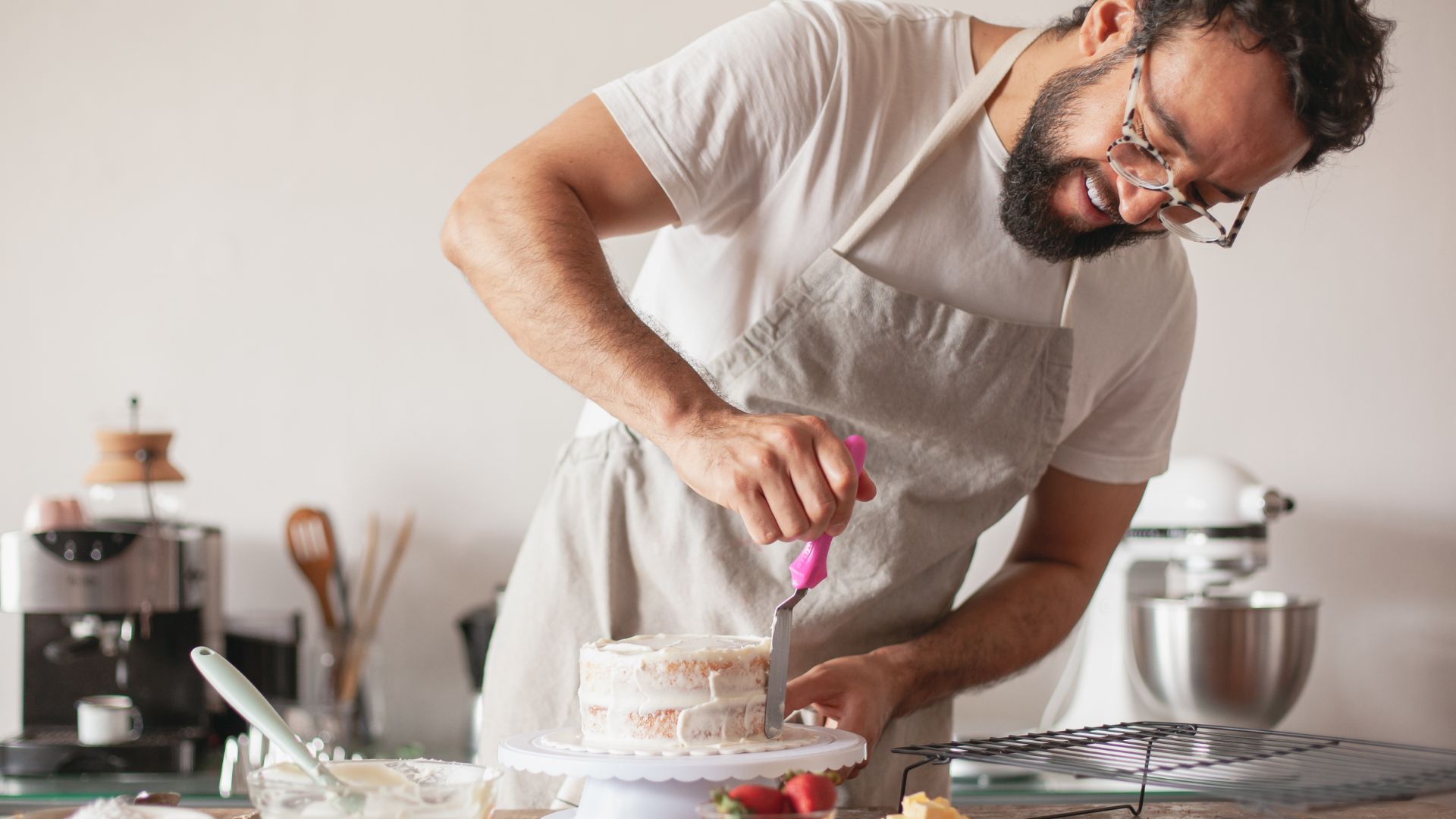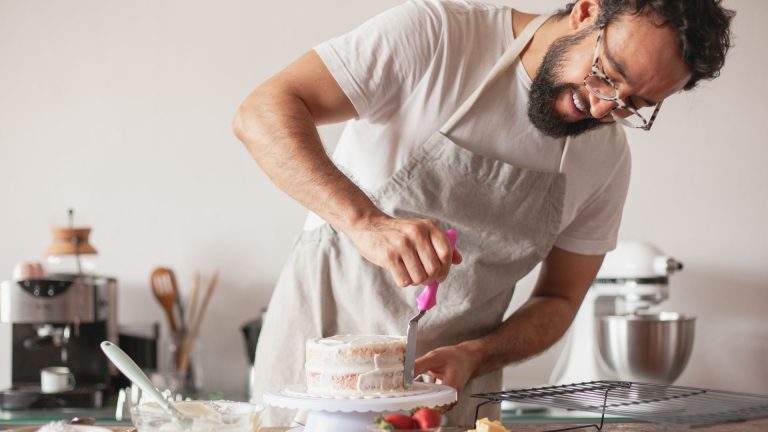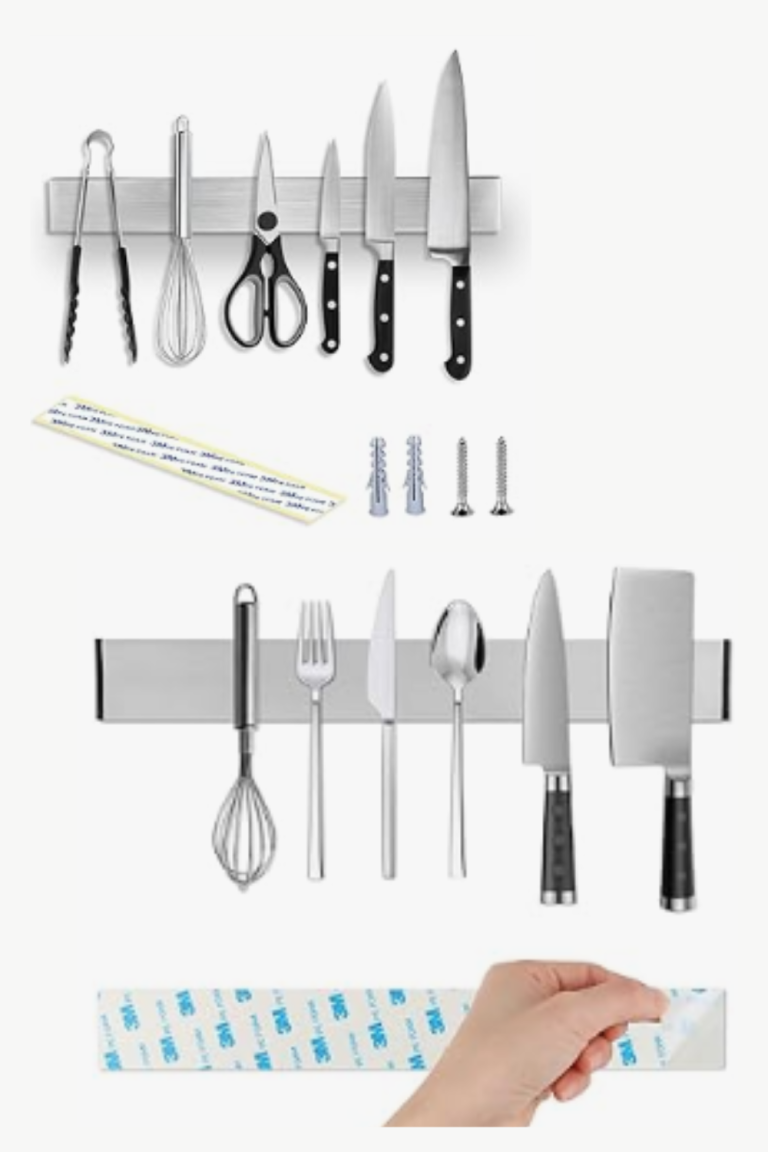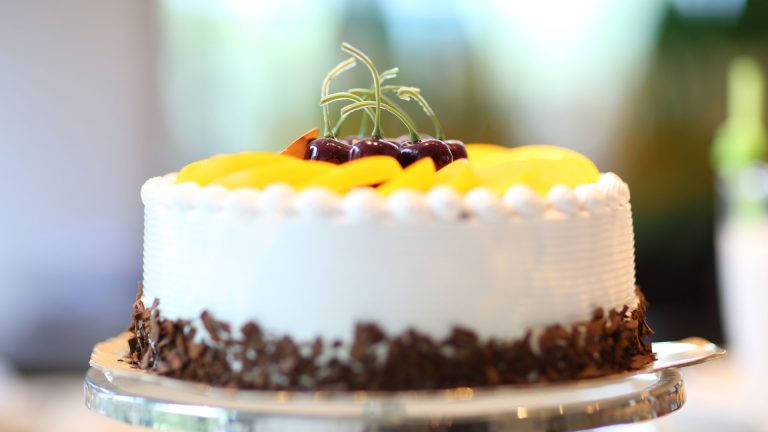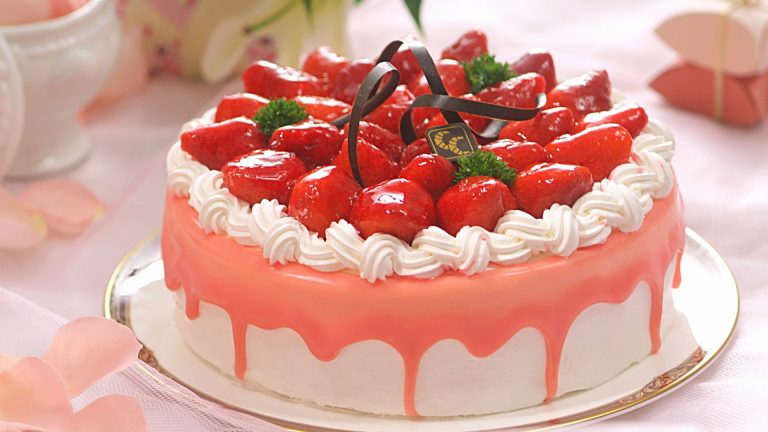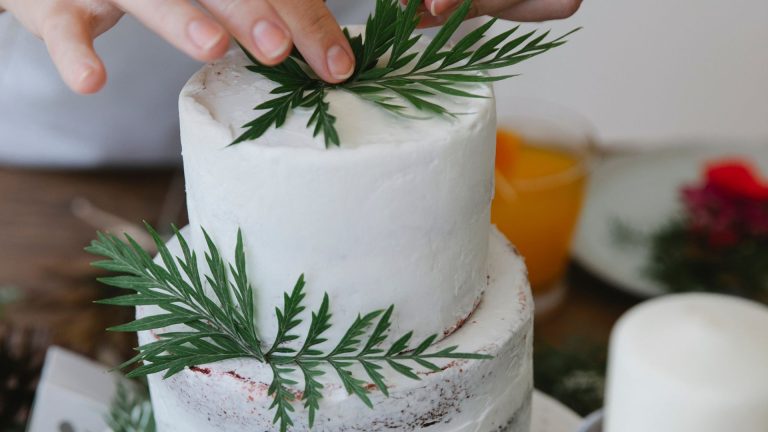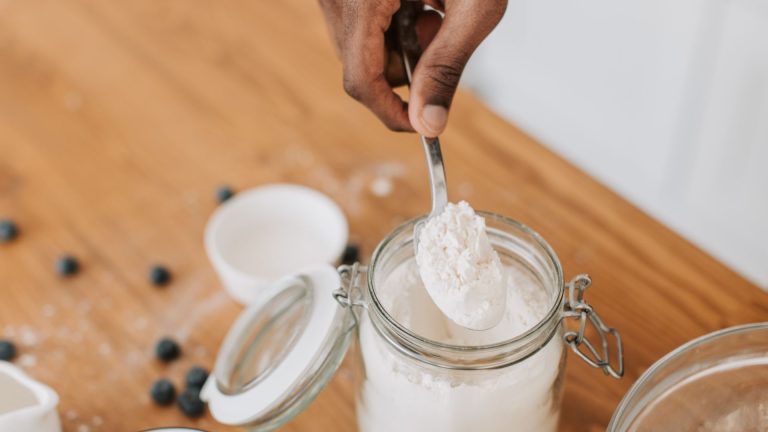GVG: Glazing role in cake making Explained
What is GVG – Glazing?
GVG, or Glazing, is a technique used in baking and cooking to give a shiny, smooth, and often flavorful finish to cakes, pastries, and other desserts. The term “glazing” generally refers to applying a liquid or semi-liquid mixture on the surface of a baked good, which then sets into a glossy, attractive layer. This technique is not just for looks it can also add flavor and help to seal in moisture. == >> Check out the right cake Glazing tools and ingredients that you need here

The Role of Glazing in Cake Making
Glazing plays several important roles in cake making:
1. Enhancing Appearance
One of the most noticeable benefits of glazing is its effect on the cake’s appearance. A well-applied glaze can transform a simple cake into a showstopper. The glossy finish catches the light and makes the cake look more appetizing and professionally finished.== >> Check out the right cake Glazing tools and ingredients that you need here
2. Adding Flavor
Glazes are often flavored, which means they can enhance the overall taste of the cake. Whether it’s a sweet vanilla glaze or a tangy citrus version, the glaze can complement or even contrast with the flavors of the cake itself.
3. Sealing in Moisture
Applying a glaze can help seal in moisture, making sure that your cake stays fresh and tender for a longer period. This is particularly useful for cakes that are prone to drying out.
4. Providing a Base for Decorations
A glaze can serve as a sticky surface that helps other decorations, such as sprinkles or edible flowers, adhere to the cake. This makes it easier to create elaborate and decorative designs.
Types of Glazes
There are several types of glazes you might use in cake making:
- Simple Syrup Glaze: Made from sugar and water, this basic glaze is often used to add sweetness and a bit of shine to cakes.
- Fruit Glaze: Typically made from fruit juice or puree mixed with a bit of sugar and sometimes a thickening agent, fruit glazes can add a burst of flavor and a beautiful color.
- Chocolate Glaze: Rich and indulgent, this type of glaze is made from chocolate, cream, and sometimes butter. It adds a luxurious finish to chocolate cakes and other desserts.
- Royal Icing Glaze: Made from egg whites, sugar, and water, this glaze dries hard and is often used for intricate decorations and designs.== >> Check out the right cake Glazing tools and ingredients that you need here
How to Apply a Glaze
Applying a glaze might seem tricky, but it’s quite straightforward:
- Prepare the Glaze: Depending on the type of glaze, you might need to melt, mix, or cook it. Make sure it’s at the right consistency too thick, and it won’t spread evenly; too thin, and it might run off the cake.
- Cool the Cake: Ensure the cake is completely cool before applying the glaze. A hot cake can cause the glaze to melt and become uneven.
- Apply the Glaze: Use a spatula or a spoon to spread the glaze over the cake. Start from the center and work your way outwards to cover the surface evenly.
- Let It Set: Allow the glaze to set before slicing the cake. This can take anywhere from a few minutes to a few hours, depending on the type of glaze used.== >> Check out the right cake Glazing tools and ingredients that you need here
So.
GVG – Glazing is more than just a finishing touch; it’s a key part of creating a beautiful and flavorful cake. By enhancing the appearance, adding flavor, sealing in moisture, and providing a base for decorations, glazing helps turn a simple dessert into a memorable treat.
Drilling Deeper: Comparing Different Types of Glazes
When it comes to glazing cakes, not all glazes are created equal. Each type of glaze offers unique characteristics and can drastically alter the look and taste of your baked goods. Let’s dive deeper into the various types of glazes, comparing their uses, benefits, and best applications to help you choose the right one for your cake.
1. Simple Syrup Glaze vs. Fruit Glaze
Simple Syrup Glaze:
Ingredients: Sugar and water.
Consistency: Thin and runny.
Flavor: Sweet, neutral flavor.
Best For: Adding a light, sweet sheen to cakes. Often used as a base layer to lock in moisture before applying other decorations.== >> Check out the right cake Glazing tools and ingredients that you need here
Fruit Glaze:
Ingredients: Fruit juice or puree, sugar, sometimes thickening agents like cornstarch.
Consistency: Can vary from thin to slightly thick.
Flavor: Adds a fruity taste and color.
Best For: Enhancing the flavor profile of fruit-based cakes. Ideal for adding a glossy, colorful finish that complements the cake’s primary ingredients.
Comparison: Simple syrup glazes are versatile and straightforward, making them perfect for a variety of cakes. Fruit glazes, on the other hand, not only add shine but also a burst of flavor and vibrant color, making them ideal for fruit or berry-flavored cakes.
2. Chocolate Glaze vs. Royal Icing Glaze
Chocolate Glaze:
Ingredients: Chocolate, cream, butter (optional).
Consistency: Smooth and slightly thick.
Flavor: Rich, chocolatey taste.
Best For: Adding a decadent, glossy finish to chocolate cakes or pastries. Also used for drizzling over other desserts for added flair.
Royal Icing Glaze:
Ingredients: Egg whites (or meringue powder), powdered sugar, water.
Consistency: Can be made thin for glazing or thick for decorations.
Flavor: Sweet with a slight hint of vanilla or almond, depending on the recipe.
Best For: Creating intricate designs and decorations that dry hard. Ideal for detailed work and making decorations that need to hold their shape.
Comparison: Chocolate glaze is perfect for a rich, indulgent look and taste, making it great for chocolate-based desserts. Royal icing glaze is better suited for detailed and decorative work, where you need a hard, durable finish that can support elaborate designs.
3. How They Affect Cake Texture and Moisture
Simple Syrup Glaze:
Texture Impact: Slightly moistens the cake surface, keeping it tender.
Moisture Retention: Helps lock in moisture, preventing the cake from drying out.
Fruit Glaze:
Texture Impact: Adds a slight shine and a hint of stickiness.
Moisture Retention: Seals in moisture well, especially when used as a top layer.
Chocolate Glaze:
Texture Impact: Creates a rich, smooth surface that can harden slightly.
Moisture Retention: Can be less effective at sealing in moisture compared to syrup or fruit glazes, but adds a luscious layer that complements rich cakes.
Royal Icing Glaze:
Texture Impact: Dries hard, creating a firm surface.
Moisture Retention: Less effective at sealing in moisture but excellent for creating a hard, protective layer that helps other decorations adhere.== >> Check out the right cake Glazing tools and ingredients that you need here
So.
Choosing the right glaze for your cake depends on what you want to achieve with your dessert. Whether you’re aiming for a sweet and simple shine, a vibrant fruit flavor, a rich chocolate layer, or a decorative hard finish, understanding the differences between these glazes can help you make the best choice for your cake.
Experiment with these glazes to see how they can elevate your baking projects. The right glaze not only enhances the appearance but also complements the flavor and texture of your cake, making every slice a delightful experience.
Comparison tabular on this topic the keynote and considerations
Comparing Cake Glazes: A Quick Reference
Here’s a handy table comparing the key types of glazes commonly used in cake making. This comparison covers their ingredients, flavor profiles, consistency, and best uses.== >> Check out the right cake Glazing tools and ingredients that you need here
| Type of Glaze | Ingredients | Consistency | Flavor Profile | Best For | Texture Impact | Moisture Retention |
|---|---|---|---|---|---|---|
| Simple Syrup Glaze | Sugar, water | Thin and runny | Sweet, neutral | Adding a light sheen and moisture | Slightly moistens the surface | Helps lock in moisture |
| Fruit Glaze | Fruit juice/puree, sugar, thickener | Can vary from thin to thick | Fruity and sweet | Enhancing fruit cakes and adding color | Adds shine and slight stickiness | Seals in moisture well |
| Chocolate Glaze | Chocolate, cream, butter (optional) | Smooth and slightly thick | Rich and chocolatey | Adding a decadent finish to chocolate cakes | Creates a rich, smooth surface | Less effective at sealing in moisture |
| Royal Icing Glaze | Egg whites (or meringue powder), powdered sugar, water | Can be thin for glazing or thick for decorations | Sweet, slight vanilla/almond | Detailed designs and decorations | Dries hard, creates a firm surface | Less effective at moisture retention |
Key Notes and Considerations
Simple Syrup Glaze
- Key Notes:
- Easy to make with just sugar and water.
- Ideal for adding a glossy finish without altering the cake’s flavor significantly.
- Can be used as a base layer before adding other decorations.
- Considerations:
- May not add much flavor.
- Typically used for cakes that don’t require strong flavors or colors.
Fruit Glaze
- Key Notes:
- Provides both flavor and color, making it ideal for fruit-based cakes.
- The fruity taste can complement the flavor of the cake, enhancing its overall profile.
- Considerations:
- Can sometimes be tricky to achieve the right consistency; too thin and it may run off, too thick and it might not spread well.
- Best applied when the cake is cool to prevent it from running.
Chocolate Glaze
- Key Notes:
- Adds a rich, indulgent layer that pairs well with chocolate cakes and pastries.
- Creates a luxurious appearance and texture.
- Considerations:
- Can harden and become difficult to slice if applied too thickly.
- May not be suitable for cakes where a lighter finish is preferred.
Royal Icing Glaze
- Key Notes:
- Dries to a hard finish, making it perfect for detailed decorations and intricate designs.
- Provides a crisp, clean look and holds decorations well.
- Considerations:
- Less effective at sealing in moisture, so it might not be the best choice for cakes that need to stay moist for a longer time.
- Can be sensitive to humidity; if it’s too humid, it may not dry properly.
FAQs on Cake Glazing
1. What is the purpose of glazing a cake?
Answer: Glazing a cake enhances its appearance by providing a glossy, attractive finish. It can also add flavor, seal in moisture, and create a surface that helps other decorations adhere.
2. Can I use any type of glaze for any cake?
Answer: While you can technically use any glaze for any cake, the choice of glaze should complement the cake’s flavor and texture. For example, a chocolate glaze works well with chocolate cakes, while a fruit glaze is great for fruit-based cakes.
3. How do I get my glaze to be smooth and even?
Answer: To achieve a smooth and even glaze, make sure the cake is completely cool before applying. Use a spatula or spoon to spread the glaze from the center outwards. Ensure the glaze has the right consistency—too thick and it won’t spread well; too thin and it might run off.
4. Can I make a glaze ahead of time?
Answer: Yes, many glazes can be prepared ahead of time. Store them in an airtight container and reheat gently if necessary. However, some glazes, like royal icing, may need to be used soon after making to prevent them from drying out or becoming too thick.
5. How long does it take for a glaze to set?
Answer: The setting time for a glaze depends on its type and thickness. Simple syrups and fruit glazes usually set within a few minutes to an hour, while royal icing can take several hours or overnight to fully dry and harden.
6. Can I add food coloring to my glaze?
Answer: Yes, food coloring can be added to most glazes to enhance their appearance. Just be sure to use gel or paste food colors for the best results, as liquid colors might affect the glaze’s consistency.
7. What’s the difference between a glaze and an icing?
Answer: A glaze is typically a thin, glossy coating applied to the surface of cakes and pastries, while icing is thicker and often used for detailed decoration. Icing can dry hard, whereas glazes usually remain softer and more pliable.
Final Words
Glazing is a vital step in cake making that can transform a simple dessert into a visually stunning and flavorful masterpiece. By understanding the different types of glazes and their unique characteristics, you can make informed decisions to elevate your baking projects. Whether you opt for a sweet and simple syrup, a vibrant fruit glaze, a rich chocolate layer, or a decorative royal icing, each choice offers distinct benefits that can enhance your cake’s appearance, flavor, and texture.
Experiment with various glazes to find the perfect one for your cakes and enjoy the process of creating beautiful and delicious desserts. With the right glaze, every cake can become a memorable treat that impresses both in taste and presentation.

Hi!
I’m Mike, the creator of Forum Foodies. In my own personal experience, understanding ingredients is key to great cooking.
Forum Foodies offers guides on various ingredients, from staples to exotic finds. Join our community, share your experiences, and learn from fellow food lovers.
Have questions or suggestions? Email me at info@forumfoodies.com. Let’s embark on this delicious adventure together.
Happy cooking.
Mike/
Related Posts
- BRU: Bruising Role in Cake Making Explained
When it comes to baking, it’s easy to get caught up in the complexities of…
- TMP: Tempering Role in Cake Making Explained
In this topic, I’m going to talk about tempering, a technique that’s often overlooked but…
- FRY: Frying Role in Cake Making Explained
In this topic, I'm going to talk about a fascinating technique in cake making: frying.…
- PST: Pastry Role in Cake Making Explained
When it comes to baking, pastries are often thought of as their own special category,…
- SCR - Scoring Role in Cake Making Explained
When it comes to cake making, every detail matters, from the ingredients you use to…
- STB - Stabilizing Role in Cake Making Explained
When diving into the world of cake making, you might come across the term "STB…
- FDR: Folding role in cake making Explained
When it comes to baking, especially making cakes, there’s a lot more that goes into…
- SHT: Shortening Role in Cake Making Explained
When it comes to baking, especially cake making, there are countless ingredients that can influence…
- SLF: Slaving Role in Cake Making Explained
In this topic, I’m going to dive into SLF – Slaving, and how it plays…
- MAC: Macerating Role in Cake Making Explained
In this topic, I’m going to talk about macerating and its role in cake making,…
- SCL: Scaling role in cake making Explained
When it comes to baking, especially cake making, precision is key. One term that often…
- CRT: Caramelizing role in cake making Explained
In this blog, I’m going to talk about caramelizing and its impact on cake making.…
- FRM: Fermenting Role in Cake Making Explained
In this topic, I’m going to talk about fermenting, especially how it plays a role…
- SCR - Scraping Role in Cake Making Explained
In this topic, I’m going to talk about SCR, or Scraping, in cake making. From…
- STF - Stuffing Its Role in Cake Making Explained
In this topic, I'm going to talk about stuffing, or STF, and its role in…

